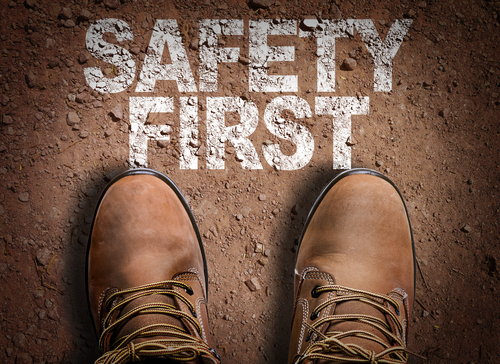Here are a few health and safety tips for small and medium-sized businesses that you can use to make your business healthier and safer for you and your employees.
How can you keep your business safe and healthy always? Here are a few important yet often neglected health and safety tips for small and medium-sized businesses that you can use to make your business healthier and safer for you, your business, and your employees.
Run regular health and safety risks assessments
The problem with doing the same tasks over and over again every day and working at the same environment for years is that you develop a feeling of being safe, relax, and lackadaisical. The tendency is that you will fail to notice the presence of health and safety risks, which increases the possibilities of injuries and accidents.
Having a third party professional run health and safety risks assessments on a regular basis, at least once a year, will ensure that your business is indeed safe for everybody. It also allows you to identify and act on whatever risks present on a timely basis before accidents do happen.
Fill your first aid kits
Though required by law, there are still small and medium-sized businesses that do not have first aid kits in their office. Some do have but the supplies inside the kits are either insufficient or incomplete.
If you still don’t have first aid kits, buy at least one. If you already have some, make sure to refill and restock them. Depending on your workplace environment and industry, they should contain items that are essential for treating burns, scrapes or abrasions, splinters, sprains, strains, and cuts (e.g. adhesive bandages, sterile gauze pads, adhesive tape, alcohol or disinfectant, cotton balls).
Also, make sure to stock medicine for treating skin problems, gastrointestinal problems, dental problems, allergies, and common symptoms of viral respiratory infections (fever, sore throat, cough, and nasal congestion). Items like scissors, heat/cold pads, thermometer, safety pins, small Swiss Army-type knife, small flashlight, first aid guide book, exam gloves, and tweezers are also helpful during emergencies.
Be ready for emergency situations
According to reports, around 10,000 cardiac arrest cases in the United States happen at work each year. Though you require your employees to do regular medical check-ups and to maintain their health at all times, you will never know when sudden cardiac arrests happen. It helps to keep your establishment ready for cardiac emergency situations like this.
According to the American Heart Association, having an automated external defibrillator like the portable physio control defibrillator and complete AED accessories at hand will increase the chances of sudden cardiac arrest sufferers to survive. Also, having your employees undergo first aid training will help you deal with emergency situations and save lives more efficiently and effectively.
Schedule regular mini-breaks
Some establishment thinks that giving regular breaks is just a waste of time and resources. The fact is, it is actually a good investment. According to studies, mini-breaks are more effective than long breaks.
By giving your employees time to rest and relax especially when doing extremely taxing tasks you can be able to minimize stress and burnouts. Chronic physical stress and pressure at work can lead to a variety of health problems like fatigue, chest pain, heart palpitations, headaches, pains, sleep disorders, and memory issues- all of these and more can affect your employees’ productivity, work quality, and concentration.
Final Thoughts
These four tips may sound basic and straightforward but they are critical to creating a safe and healthy workplace environment. Sad to say, they are often neglected.







_2.jpg)